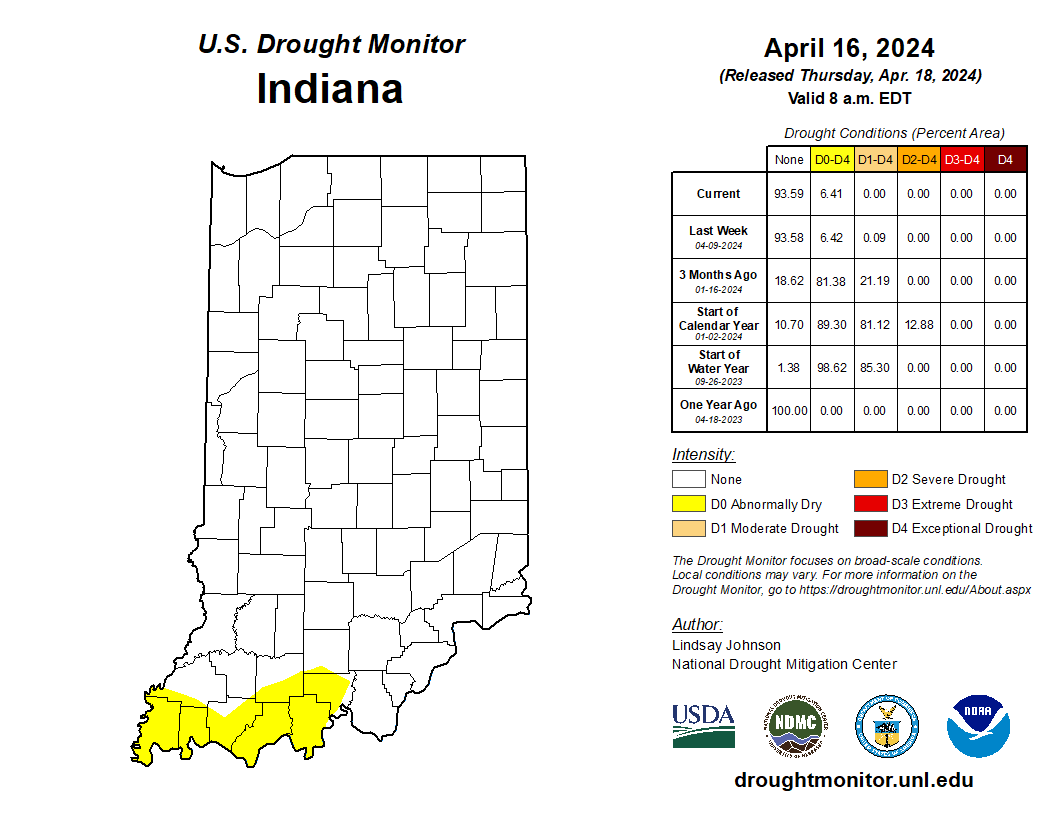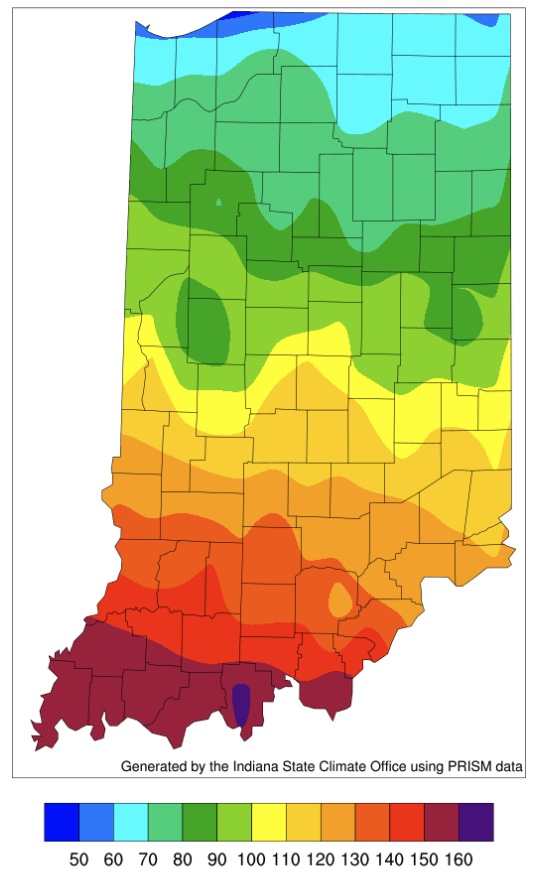There was an interesting conversation among drought experts this week about how best to communicate drought, particularly when surface conditions appear so saturated. I thought of Indiana a lot during this discussion because with all the rain the state has received over the last several weeks (over twice the normal amount!), there is localized flooding, and streams seem to be in good shape. However, groundwater levels are still below normal across much of the state, (particularly western Indiana, but also locations in northeast, central, and southern Indiana) that what we see on the surface may not be making its way down into our aquifers. This could become critical for water supply not only for domestic use but possibly irrigation later in the growing season. In fact, according to the National Oceanic and Atmospheric Administration (NOAA), southwestern Indiana is still trying to make up an approximate 3-inch precipitation deficit and southern Indiana is facing a 3-to-6-inch deficit. Fortunately, April has been wet, so those deficits will hopefully be eliminated within the next few weeks. However, when ones sees the most current U.S. Drought Monitor (USDM) map for Indiana and wonders how there could still be areas designated as Abnormally Dry (D0), remember that all types of drought (e.g., hydrological, socioeconomic, meteorological) are being considered and not just agricultural drought. The latest USDM continues to show a small band of Abnormally Dry (D0) conditions in southwestern Indiana along the Ohio River. (Figure 1)
Modified accumulated growing degree days since April 1st continue to increase rapidly due to the warmer temperatures. Ranges now extend from over 80 units in northern counties to over 140 units in southern counties. (Figure 2) This is only about 5 to 20 units ahead of normal for this time of year.
Aside from another rain event passing through our area at the end of this week, conditions appear to clear up for most of this next week. NOAA climate outlooks for April 23-27 (6-10-day outlook) is favoring near-normal temperatures with a slight chance of above-normal precipitation. However, the 8-14-day outlook (Apr 25-May 1) is strongly favoring above-normal temperatures and precipitation. The climate outlook for May (released April 18th) is favoring above-normal temperatures for Indiana. For northern Indiana, the outlooks are indicating an equal chance of having either above- or below-normal precipitation with southern Indiana slightly favoring a wetter-than-normal May. Similar outlooks have been released for the 3-month period of May-June-July regarding temperature and precipitation.




